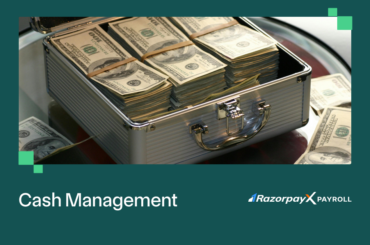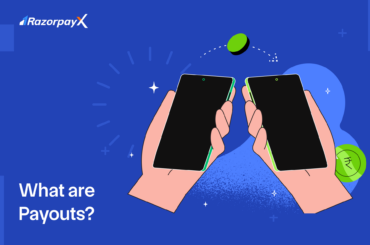What is Business-to-Consumer (B2C)?
Any business that directly sells products to the end user is a B2C. Today, the most popular B2C businesses are online retailers – companies like Nykaa or Amazon. But the umbrella of B2C includes a lot more.
Traditionally, B2C businesses included mall outlets, small businesses, or restaurants that didn’t have any middleman between the creator of the product and the end user.
The rise of the internet resulted in a new B2C business format altogether, in the form of e-commerce platforms, i.e. selling of goods and services online. Amazon, Flipkart, Ola, Swiggy, Nykaa, OLX and BookMyShow are some examples of B2C e-commerce businesses in India.
Marketing is very important in the B2C space, since individual consumers are a lot more emotionally driven and do not show as much stickiness to product as compared to businesses.
B2C vs B2B
While B2C sells directly to the consumer, B2B is any business that caters to other businesses.
| Feature | B2C | B2B |
|---|---|---|
| Target audience | Individual consumers | Businesses |
| Buying process | Shorter and more impulsive | Longer and more deliberate |
| Decision-making process | More emotional | More rational |
| Volume of transactions | Smaller | Larger |
| Value of transactions | Smaller | Larger |
| Marketing channels | More focused on online and offline advertising | More focused on business-to-business (B2B) events, trade shows, and online marketing |
| Sales cycle | Shorter | Longer |
| Customer relationship | More transactional | More long-term |
Related Read: What is B2B eCommerce, And How Does it Work?
Types of B2C Models
- Direct Sellers
Direct sellers are the most common business-to-consumer business. These are retail stores or sites from where consumers directly make purchases. Small businesses, producers and manufacturers are examples of direct sellers who market their products directly to their consumers.
- Intermediaries
Intermediaries are online platforms that connect buyers with sellers in exchange for a commission. The most important reason why consumers choose online intermediaries is because they offer low prices. Amazon, Etsy and eBay are some of the examples of online intermediaries.
- Advertising-based
B2C companies like YouTube, Facebook and Reddit provide free services to attract visitors. Then, they advertise products and services from other companies to visitors to generate revenue. Traffic-driving strategies like content marketing and social media marketing are used by B2C advertising businesses.
B2C advertising-based companies earn profits by selling advertising spaces. Sellers, on the other hand, get the benefit of online visibility, generate revenue and get their leads converted.
- Community-based
Community businesses choose online communities and social media platforms such as Facebook, Instagram, Twitter, LinkedIn and other online platforms to market their products directly to site users.
- Fee-based
Fee-based B2C companies are usually e-commerce businesses which require users to pay a subscription fee to access their services. Examples include Netflix, Spotify, The Wall Street Journal and Hulu.
What Are the Benefits of B2C?
Let’s explore the benefits of owning a B2C business:
- Larger Reach: B2C businesses can reach a global audience with the right marketing channels thanks to the huge interest and creative strategies they can employ.
- Minimum Cost and Expenses: Online B2C businesses enjoy reduced overhead expenses – they don’t need to spend on rent, warehousing, inventory or electricity.
- Access to Customer Data: Considering that a B2C business deals directly with customers, it has better and direct access to valuable data about customers. They can easily get insights such as customer behaviour, conversion statistics and demographic details.
- Customer Personalisation: B2C businesses usually enjoy a closer relationship with their customers than B2B businesses. Think about Zomato’s marketing strategy – the casual tone and relaxed humour makes B2C businesses feel a lot more approachable.
B2C Challenges
Let’s look at the challenges of running a B2C business:
- Business-to-consumer businesses face massive competition in the market. To survive, one has to market their product and brand well.
- Customer retention and satisfaction is a big challenge. Investing in innovative marketing and attracting customers is essential.
10 Best B2C Marketing Strategies
B2C businesses pay a lot of attention to their marketing strategy. While businesses are more logical and methodical when deciding what to buy or who to buy from, individual consumers are more emotionally-driven and unconsciously rely on cues from advertisement they’d seen, or word of mouth.
This makes it very important for B2Cs to have a robust marketing strategy in place to ensure they reach their target audience, build brand awareness, generate leads, and drive sales. Here are a few marketing strategies that the top B2Cs in India use.
- Content marketing: Create and share valuable content that is relevant to your target audience. This could include blog posts, articles, infographics, e-books, or videos. For example, a clothing brand could create a blog post about how to style different types of jeans. For example, Nykaa has a YouTube channel where they post relatable, funny and promotional content for their user base.
- Search engine optimisation (SEO): Optimise your website and content for search engines so that your website appears higher in search results pages. For example, any time you search for practically any product on Google, you see shopping sites like Amazon, Flipkart or IKEA right at the top.
- Pay-per-click (PPC) advertising: Pay for ads to appear at the top of search results pages. This is a great way to reach a large audience quickly. For example, an electronics brand could run PPC ads for the keyword “laptops.”
- Social media marketing: Use social media platforms to connect with your target audience and promote your products or services. Instagram, LinkedIn, Facebook and YouTube are powerful tools to reach your audience, and many B2C businesses have huge followings on these social media. For example, Netflix’s Instagram has 33 million followers.
- Email marketing: Collect email addresses from your target audience and send them regular emails with updates about your business, new products or services, and special offers. For example, a subscription box company could send out email newsletters to its subscribers with details about the latest products in its box.
- Influencer marketing: Partner with influencers who have a large following in your target audience. This could involve having them promote your products or services on their social media channels or in their blog posts. For example, a fashion brand could partner with a fashion blogger to promote its latest collection.
- Affiliate marketing: Partner with other businesses to promote your products or services. This could involve paying them a commission for every sale they generate. For example, an online retailer could partner with a travel agency to promote its travel packages.
- Guerrilla marketing: Use unconventional and creative marketing tactics to get attention. This could involve stunts, street performances, or handing out flyers. For example, a restaurant could create a food truck that drives around town and gives out free samples.
- Public relations: Get your business mentioned in the media. This could involve issuing press releases, pitching stories to journalists, or hosting events. For example, a cosmetics brand could host a celebrity makeup tutorial to get attention from the media.
- Direct marketing: Send direct mail or email to your target audience. This could include catalogs, brochures, or promotional offers. For example, a credit card company could send out direct mail to potential customers with offers for a free trial.
Related Read: What is a Niche Market? With Examples & Strategies
Financial Management for B2C
B2C businesses have unique financial needs – customer refunds, regulations & compliances, vendor management needs and more.
In order to help B2Cs save time and reduce manual errors, Razorpay created RazorpayX, a supercharged business banking suite.
- Cut manual effort and mistakes with automated payouts, taxes and more
- A current account now directly integrated with your favourite accounting software
- Smart bulk payouts so you don’t have to worry about any missed payments
- Vendor management, payroll management – all in one place
- AI-driven financial insights with RazorpayX smart dashboard
FAQs
What is a B2C target market?
B2C target markets are groups of people who are the target consumers of a business. B2C businesses may have different target markets for different goods and services.
Why is B2C marketing important?
Marketing is essential for B2C businesses. If you have a B2C business, you’d want to reach as many potential customers as possible. This will help you establish your company’s name in the industry and get regular customers.
What is the main difference between B2C and B2B businesses?
While a B2C business sells its products and services directly to consumers, a B2B business sells its products and services to other businesses.
What is an example of B2C eCommerce?
Online streaming platforms like Netflix, ride-sharing platforms like Uber and online marketplaces like Amazon are examples of B2C businesses.
What are the payment methods used by B2C businesses?
The various payment methods for B2C businesses are credit and debit cards, bank transfers and mobile payments.





